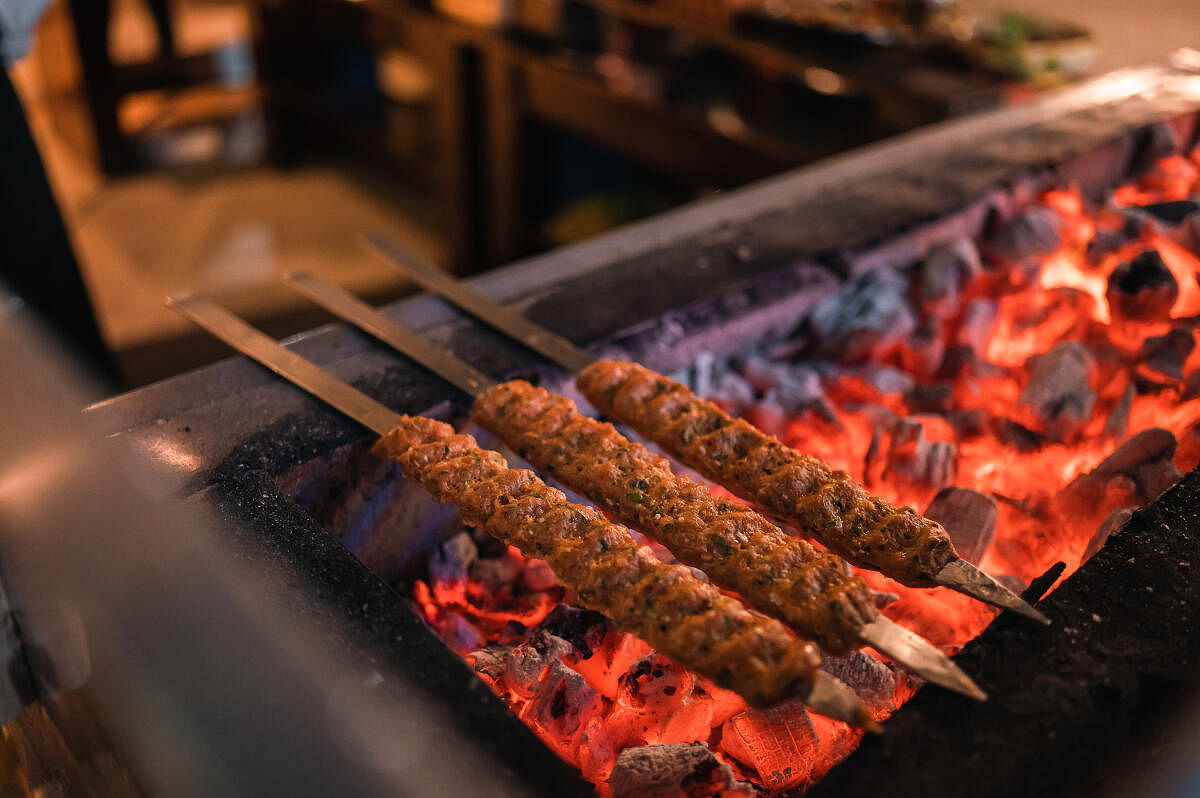

It is not often that a chef tears up while describing the cuisine of her homeland. But when the homeland happens to be Iran and the chef a woman who has fought against odds to do what she loves, you know instinctively that her emotions are not spurious. Iranian chef Azi Karami, who was in town for a 10-day Persian pop-up at a popular restaurant in north Bengaluru, says she is here not just to introduce authentic Persian cuisine to Bengaluru diners but also to spread the word about the “happy and beautiful” facets of her country. Begging me not to view Iran only through the narrow politico-religious lens, she paints a picture of a nation where a good meal is sacrosanct, a verdant land whose people take their picnics by rivers and waterfalls seriously and welcome their guests home with a platter of golden apricots, fat black olives, succulent peaches and velvety figs. And steaming Iranian chai. Karami says most people are as unfamiliar with original Persian cuisine as they are with the cultures and traditions of Iran and the despairs that the country’s political strife is only making matters worse. “Everybody is interested in Middle-Eastern cuisine but the food of each country in the region is considerably different. Most restaurants that claim to be ‘original Middle-Eastern’ are often serving, at best, a mash-up,” she says.
This is perhaps why you find many confidently saying that Iranian dishes are spicy and fiery, befitting its politics (and its sun)! But nothing could be further from the truth. Gentle and comforting, with spices kept to the minimum and the dishes slow-cooked and layered, Persian cuisine is a patchwork quilt of colours, textures, flavours and smells that demands from its patron an approach that is calm and a respect for the poetry that is food. “In traditional dishes, the spices that are mainly used are saffron, black pepper, rosewater and lime. In my creations, I have tweaked this a bit and introduced other spices for them to be more attuned to the Indian palate — you could call these dishes Indo-Persian,” explains the chef.
We began our culinary journey with the chef’s signature mezze platter. My eyes went straight to Dolma, a dish I was familiar with because of an Arabian friend who was mad about it! Essentially a stuffed dish made with a filling of rice, minced meat or a combination of both inside a leaf, mostly vine leaf, Dolma is a part of many Middle Eastern cuisines and has taken on different avatars in each country. “Eat it with your hand!” admonished the chef and I did, gladly. Accompanying this was the fancifully-named Zeytoon Parvardeh — a typical snack from north Iran made of green olives marinated in olive oil, garlic, mint and finely chopped walnuts. There were the usual suspects, of course — falafel and crisp pita bread with hummus. But the real stars were the side servings. First up was Muhammara, a spicy dip with peeking walnuts; then there was the Borani Esfenaj, a startingly simple but delicious yoghurt-based dip made of spinach and walnuts along with Borani Banjan, a creamy kofta-like thick sauce prepared with eggplants and yoghurt, which the chef tells me has its origins in Afghanistan. Yoghurt, incidentally, plays an important role in Persian fare and is often served with starters. From here, we moved on to Ash-e Jo, a winter staple in Iranian homes. Made of chickpeas, beans and lentils, it is a meal in itself and left very little space in my tummy for the kebabs and the Sabzi Polo (the Persian version of Pulao) that followed. The mildly flavoured but distinctly different Torsh was a winner — a lamb kebab slow-cooked in pomegranate molasses, parsley, and, yes, walnuts. Karami is very particular about her desserts and the ingredients that go into them. “No scrimping with the pistachios in the baklava,” she declares and sends me off with a promise of “mehman nawazi” if I ever visit her in Tehran, an invitation I am sorely tempted to take seriously.